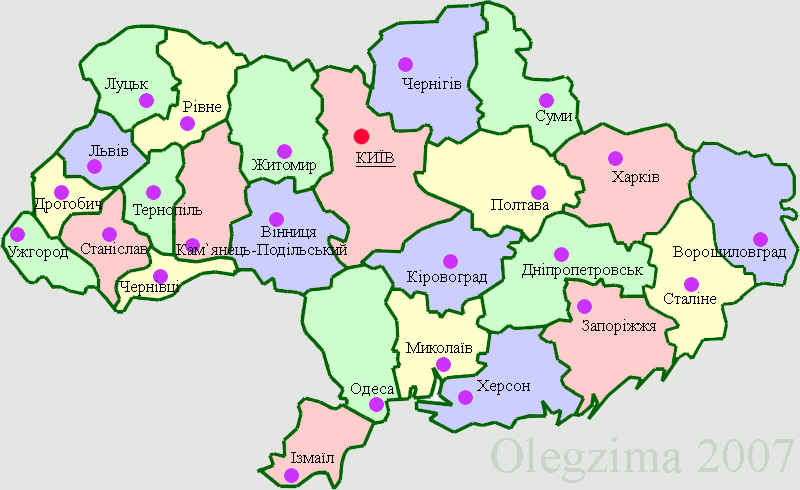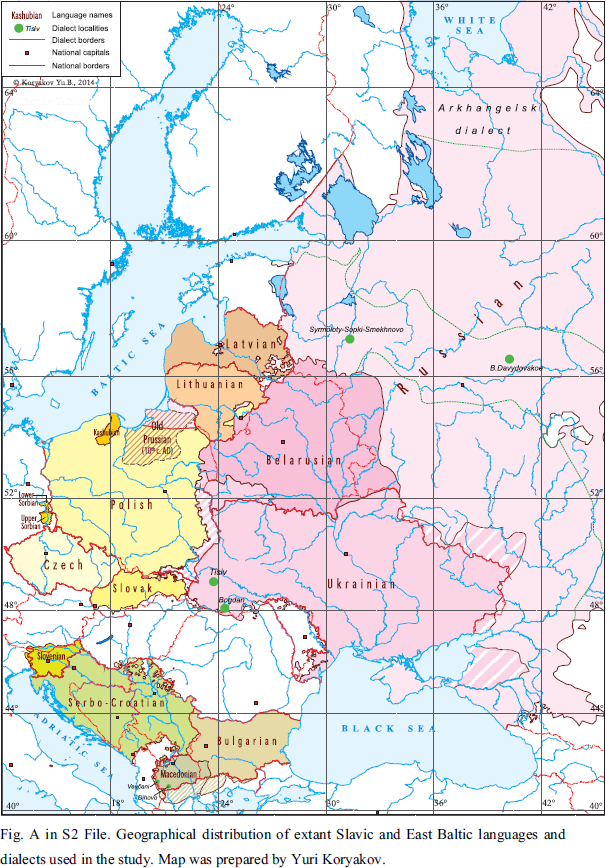|
Svitlyi Luch
Svitlyi Luch (, ) is a village in Ukraine, in the Kalmiuske Raion of Donetsk Oblast. As of 2001, the population was 41. Demographics As of the 2001 Ukrainian Census, 36.59% of the population spoke Ukrainian, 58.54% spoke Russian, and 4.88% spoke Belarusian Belarusian may refer to: * Something of, or related to Belarus * Belarusians, people from Belarus, or of Belarusian descent * A citizen of Belarus, see Demographics of Belarus * Belarusian language * Belarusian culture * Belarusian cuisine * Byelor .... Notable Residents * Aleksandr Garkavets, linguist, philologist, and Turkologist References {{DEFAULTSORT:Svitlyi Luch Kalmiuske urban hromada ... [...More Info...] [...Related Items...] OR: [Wikipedia] [Google] [Baidu] |
Ukraine
Ukraine ( uk, Україна, Ukraïna, ) is a country in Eastern Europe. It is the second-largest European country after Russia, which it borders to the east and northeast. Ukraine covers approximately . Prior to the ongoing Russian invasion, it was the eighth-most populous country in Europe, with a population of around 41 million people. It is also bordered by Belarus to the north; by Poland, Slovakia, and Hungary to the west; and by Romania and Moldova to the southwest; with a coastline along the Black Sea and the Sea of Azov to the south and southeast. Kyiv is the nation's capital and largest city. Ukraine's state language is Ukrainian; Russian is also widely spoken, especially in the east and south. During the Middle Ages, Ukraine was the site of early Slavic expansion and the area later became a key centre of East Slavic culture under the state of Kievan Rus', which emerged in the 9th century. The state eventually disintegrated into rival regional powers and ... [...More Info...] [...Related Items...] OR: [Wikipedia] [Google] [Baidu] |
Oblasts Of Ukraine
An oblast ( uk, о́бласть; ) in Ukraine, often called a region or province, is the main type of first-level administrative division of the country. Ukraine's territory is divided into 24 oblasts, as well as one autonomous republic, Crimea, and two cities with special status, Kyiv and Sevastopol. Ukraine is a unitary state, thus the oblasts do not have much legal scope of competence other than that which is established in the Ukrainian Constitution and by law. Articles 140–146 of Chapter XI of the constitution deal directly with local authorities and their competency. Oblasts are subdivided into raions (districts), each oblast having from 3 to 10 raions following the July 2020 reform. General characteristics In Ukraine, the term '' oblast'' denotes a primary administrative division. Under the Russian Empire and into the 1920s, Ukraine was divided between several governorates. The term ''oblast'' was introduced in 1932 by Soviet authorities when the Ukrainian SSR ... [...More Info...] [...Related Items...] OR: [Wikipedia] [Google] [Baidu] |
Raions Of Ukraine
Raions of Ukraine (often translated as "districts"; Ukrainian: ра́йон, tr. ''raion''; plural: райо́ни, tr. ''raiony'') are the second level of administrative division in Ukraine, below the oblast. Raions were created in a 1922 administrative reform of the Soviet Union, to which Ukraine, as the Ukrainian Soviet Socialist Republic, belonged. On 17 July 2020, the Verkhovna Rada (Ukraine's parliament) approved an administrative reform to merge most of the 490 raions, along with the " cities of regional significance", which were previously outside the raions, into just 136 reformed raions. Most tasks of the raions (education, healthcare, sport facilities, culture, and social welfare) were taken over by new hromadas, the subdivisions of raions. [...More Info...] [...Related Items...] OR: [Wikipedia] [Google] [Baidu] |
Donetsk Oblast
The Donetsk Oblast ( ukr, Донецька область, Donetska oblast, ), also referred to as Donechchyna ( ukr, Донеччина, links=no), is an oblast of eastern Ukraine. It is Ukraine's most populous province, with around 4.1 million residents. Its administrative centre is Donetsk; however, its Regional State Administration has been temporarily relocated to Kramatorsk because of the ongoing Russo-Ukrainian war. Historically, the region has been an important part of the Donbas region. From its creation in 1938 until November 1961, it bore the name ''Stalino Oblast'' as Donetsk was then named "Stalino", in honour of Joseph Stalin. As part of the de-Stalinization process, it was renamed after the Siversky Donets river, the main artery of Eastern Ukraine. Its population is estimated as The oblast is known for its urban sprawl of Donetsk– Makiivka and Horlivka– Yenakiieve and it is often associated with the coal mining industry. The war in Donbas and the subseq ... [...More Info...] [...Related Items...] OR: [Wikipedia] [Google] [Baidu] |
Kalmiuske Raion
Kalmiuske Raion ( uk, Кальміуський район, Kalmiuskyi raion, russian: Кальмиусский район, Kalmiussky rayon) is a prospective raion (district) of Donetsk Oblast, Ukraine. It was formally created in July 2020 as part of the reform of administrative divisions of Ukraine. The center of the raion is in the town of Kalmiuske ( Komsomolske). Population: . The area of raion is controlled by the Donetsk People's Republic The Donetsk People's Republic ( rus, Донецкая Народная Республика, Donetskaya Narodnaya Respublika, dɐˈnʲetskəjə nɐˈrodnəjə rʲɪˈspublʲɪkə; abbreviated as DPR or DNR, rus, ДНР) is a disputed en ..., which continues to use the old, pre-2020 administrative divisions of Ukraine. References {{coord, 47, 38, N, 38, 06, E, type:adm2nd_region:UA, display=title Raions of Donetsk Oblast Ukrainian raions established during the 2020 administrative reform * ... [...More Info...] [...Related Items...] OR: [Wikipedia] [Google] [Baidu] |
Hromada
A hromada ( uk, територіальна громада, lit=territorial community, translit=terytorialna hromada) is a basic unit of administrative division in Ukraine, similar to a municipality. It was established by the Government of Ukraine on 12 June 2020. Similar terms exist in Poland ('' gromada'') and in Belarus ('' hramada''). The literal translation of this term is " community", similarly to the terms used in western European states, such as Germany (''Gemeinde''), France ('' commune'') and Italy ('' comune''). History In history of Ukraine and Belarus, hromadas appeared first as village communities, which gathered their meetings for discussing and resolving current issues. In the 19th century, there were a number of political organizations of the same name, particularly in Belarus. Prior to 2020, the basic units of administrative division in Ukraine were rural councils, settlement councils and city councils, which were often referred to by the generic term ... [...More Info...] [...Related Items...] OR: [Wikipedia] [Google] [Baidu] |
Ukrainian Census (2001)
The Ukrainian Census of 2001 is to date the only census of the population of independent Ukraine. It was conducted by the State Statistics Committee of Ukraine on 5 December 2001, twelve years after the last Soviet Union census in 1989.In 2021, there will most likely be no all-Ukrainian census - Minister hromadske.ua (21 April 2020) The next Ukrainian census was planned to be held in 2011 but has been repeatedly postponed [...More Info...] [...Related Items...] OR: [Wikipedia] [Google] [Baidu] |
Ukrainian Language
Ukrainian ( uk, украї́нська мо́ва, translit=ukrainska mova, label=native name, ) is an East Slavic language of the Indo-European language family. It is the native language of about 40 million people and the official state language of Ukraine in Eastern Europe. Written Ukrainian uses the Ukrainian alphabet, a variant of the Cyrillic script. The standard Ukrainian language is regulated by the National Academy of Sciences of Ukraine (NANU; particularly by its Institute for the Ukrainian Language), the Ukrainian language-information fund, and Potebnia Institute of Linguistics. Comparisons are often drawn to Russian, a prominent Slavic language, but there is more mutual intelligibility with Belarusian,Alexander M. Schenker. 1993. "Proto-Slavonic," ''The Slavonic Languages''. (Routledge). pp. 60–121. p. 60: " hedistinction between dialect and language being blurred, there can be no unanimity on this issue in all instances..."C.F. Voegelin and F.M. Voegelin ... [...More Info...] [...Related Items...] OR: [Wikipedia] [Google] [Baidu] |
Russian Language
Russian (russian: русский язык, russkij jazyk, link=no, ) is an East Slavic language mainly spoken in Russia. It is the native language of the Russians, and belongs to the Indo-European language family. It is one of four living East Slavic languages, and is also a part of the larger Balto-Slavic languages. Besides Russia itself, Russian is an official language in Belarus, Kazakhstan, and Kyrgyzstan, and is used widely as a lingua franca throughout Ukraine, the Caucasus, Central Asia, and to some extent in the Baltic states. It was the ''de facto'' language of the former Soviet Union, Constitution and Fundamental Law of the Union of Soviet Socialist Republics, 1977: Section II, Chapter 6, Article 36 and continues to be used in public life with varying proficiency in all of the post-Soviet states. Russian has over 258 million total speakers worldwide. It is the most spoken Slavic language, and the most spoken native language in Europe, as well as the ... [...More Info...] [...Related Items...] OR: [Wikipedia] [Google] [Baidu] |
Belarusian Language
Belarusian ( be, беларуская мова, biełaruskaja mova, link=no, ) is an East Slavic language. It is the native language of many Belarusians and one of the two official state languages in Belarus. Additionally, it is spoken in some parts of Russia, Lithuania, Latvia, Poland, and Ukraine by Belarusian minorities in those countries. Before Belarus gained independence in 1991, the language was only known in English as ''Byelorussian'' or ''Belorussian'', the compound term retaining the English-language name for the Russian language in its second part, or alternatively as ''White Russian''. Following independence, it became known as ''Belarusan'' and since 1995 as ''Belarusian'' in English. As one of the East Slavic languages, Belarusian shares many grammatical and lexical features with other members of the group. To some extent, Russian, Rusyn, Ukrainian, and Belarusian retain a degree of mutual intelligibility. Its predecessor stage is known in Western aca ... [...More Info...] [...Related Items...] OR: [Wikipedia] [Google] [Baidu] |
Aleksandr Garkavets
Aleksandr Nikolaevich Garkavets (; ; October 19, 1947-) is a Soviet, Ukrainian, and Kazakhstani linguist, philologist, and Turkologist. He is best known for his work on the Kipchak languages, both modern and historical. Much of the focus of his work has been on the Armeno-Kipchak language, Cuman language, Crimean Tatar language, and Urum language. Biography Garkavets was born on October 19, 1947, in the village of Svitlyi Luch, in the Starobesheve Raion, of Donetsk Oblast in the Ukrainian Soviet Socialist Republic. Garkavets studied at the National University of Kharkiv in the department of Ukrainian language and literature, graduating in 1970. After graduation, he worked at the newspaper ''Sotsialistychna Kharkivshchyna'' and then at the National University of Kharkiv press. He entered graduate school in 1972 at the Institute of Oriental Studies of the Russian Academy of Sciences and the Institute of Linguistics of the Russian Academy of Sciences. In 1975 he defended his Ph ... [...More Info...] [...Related Items...] OR: [Wikipedia] [Google] [Baidu] |




